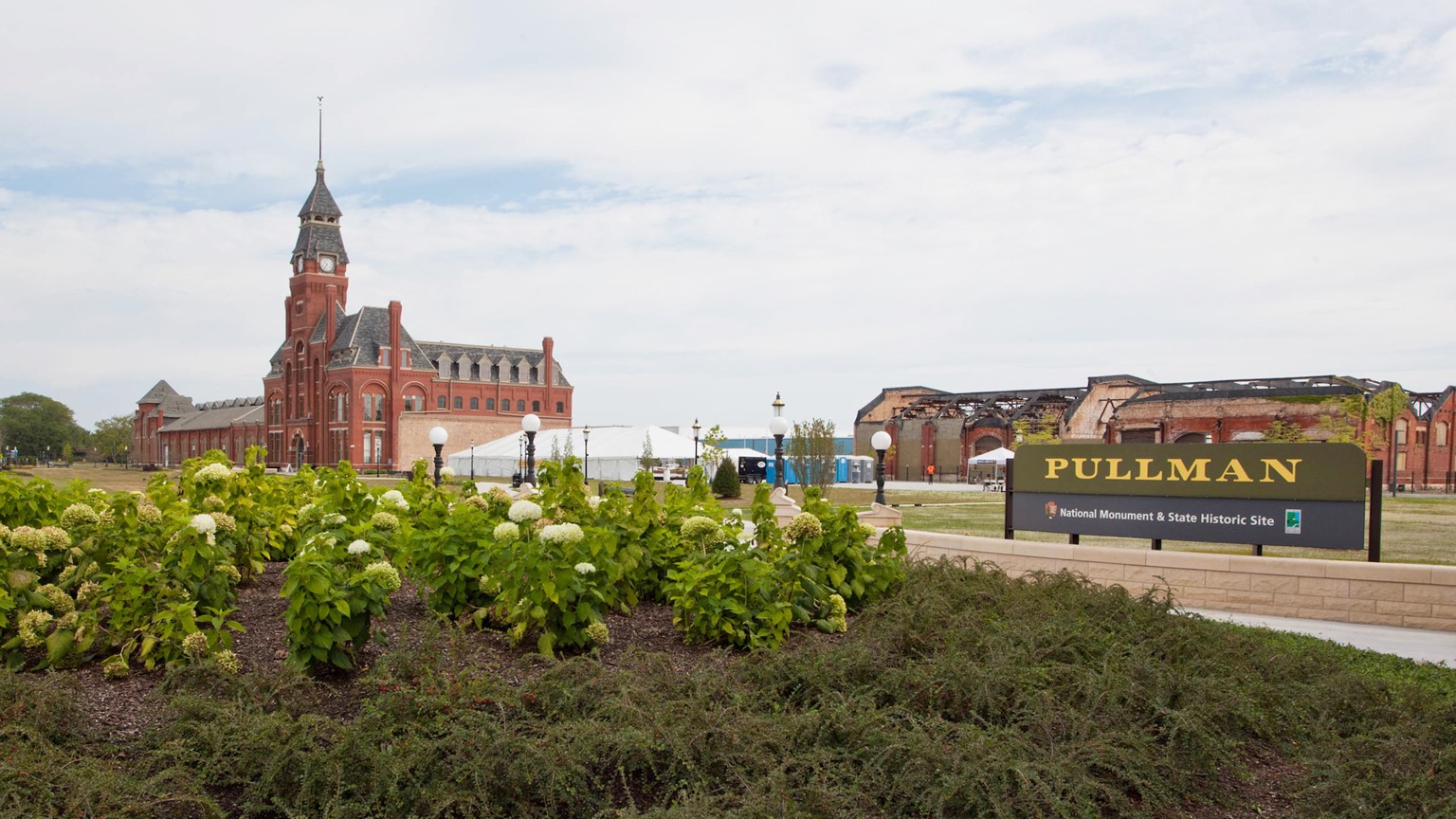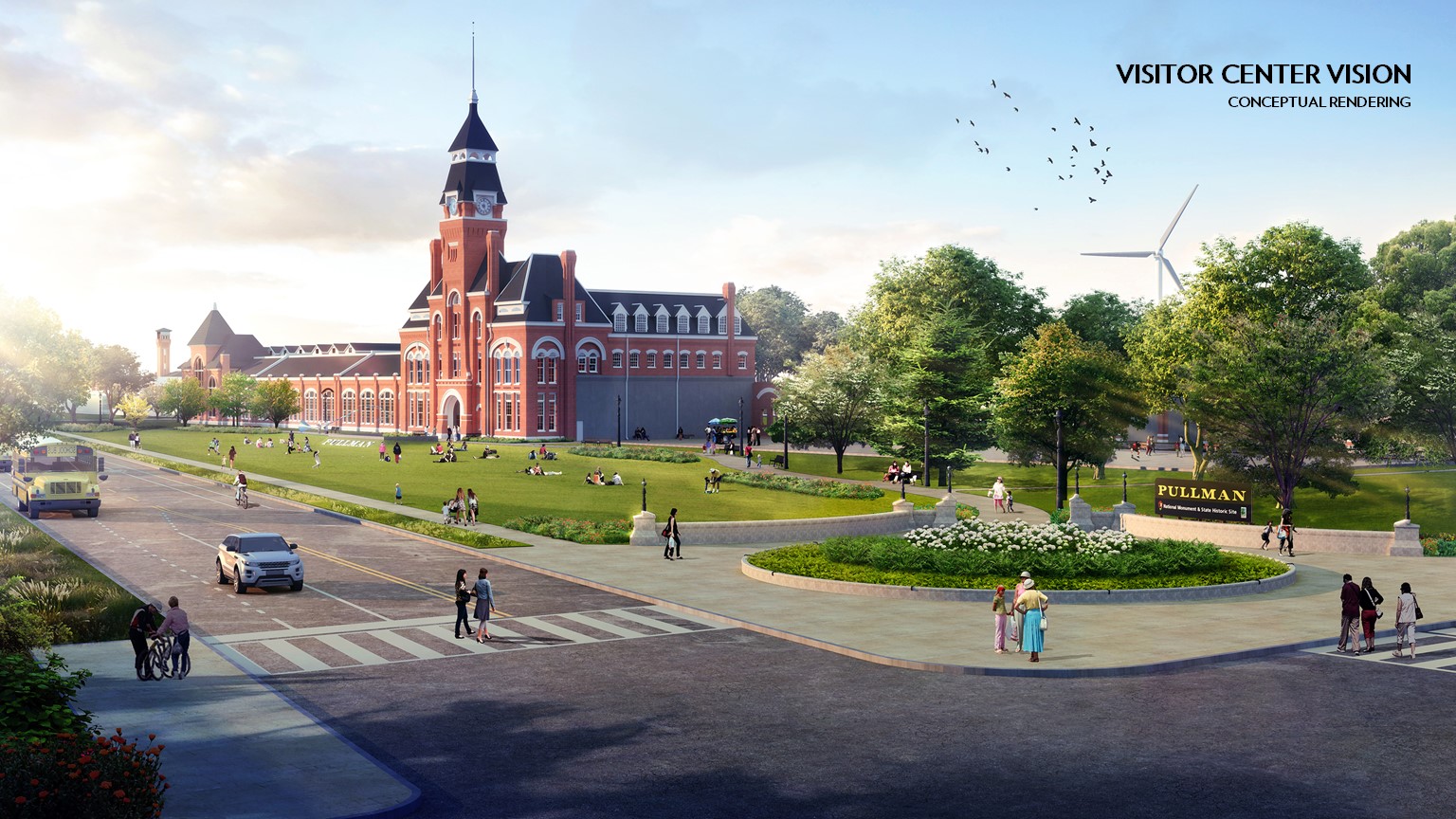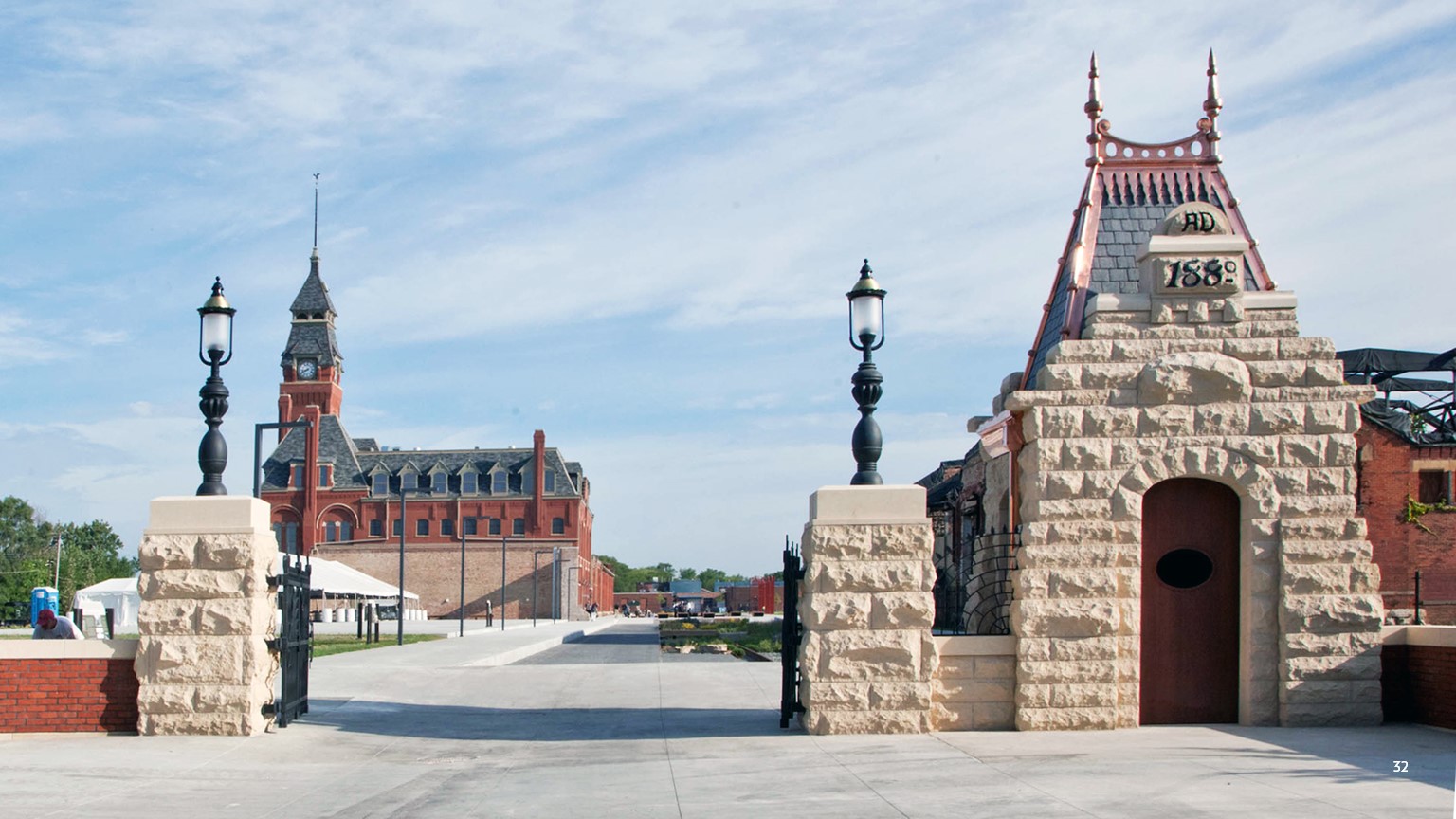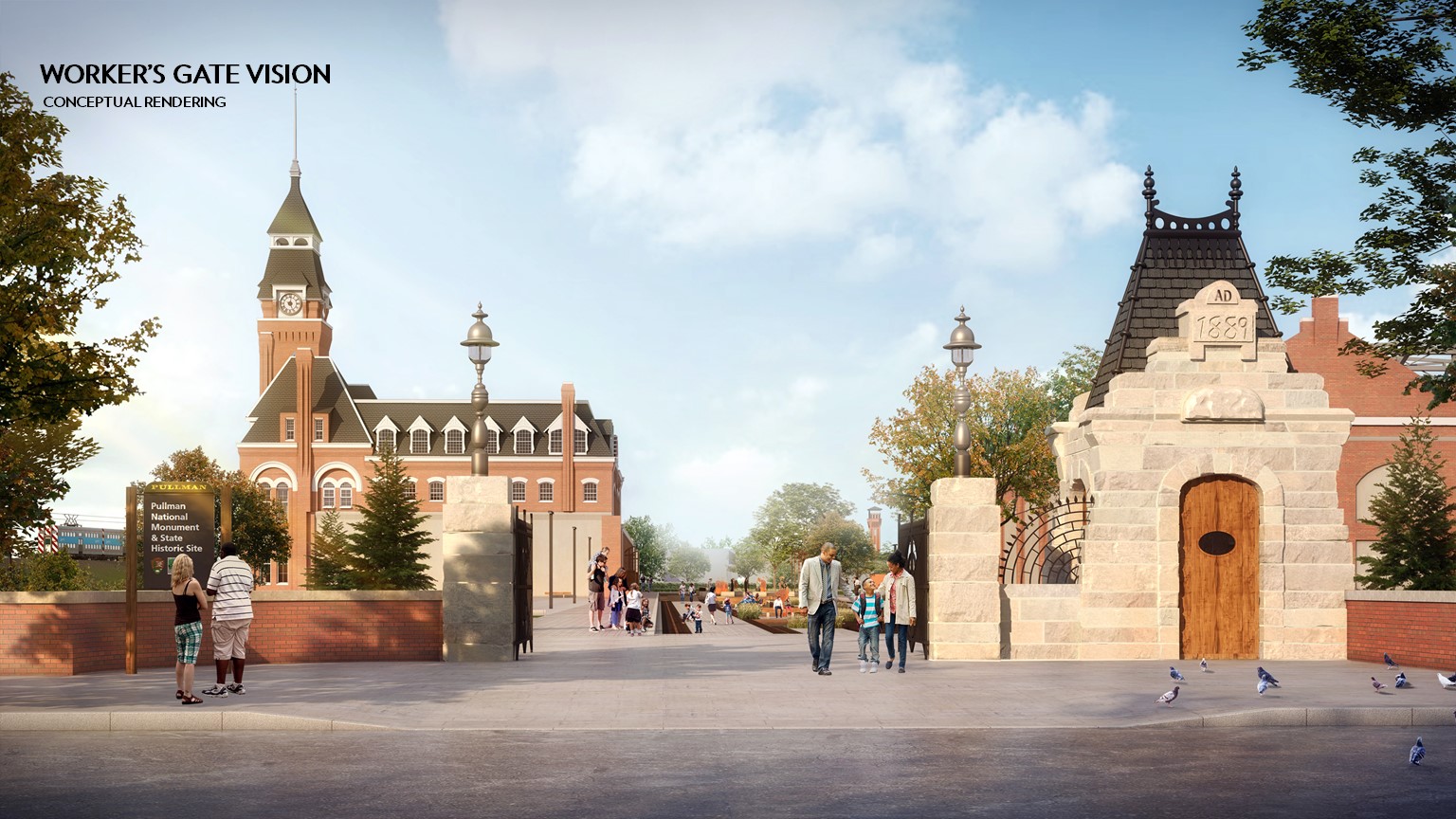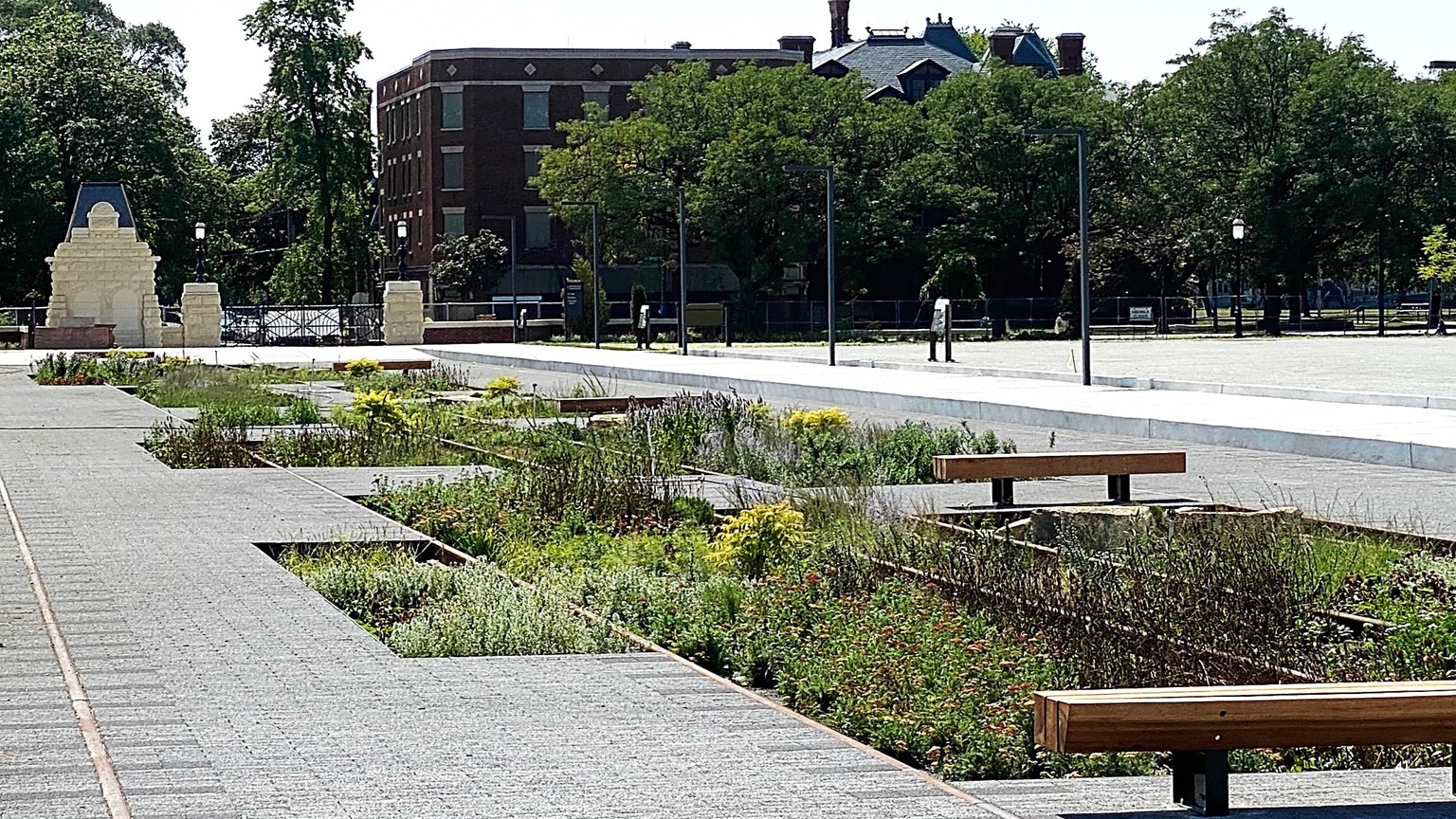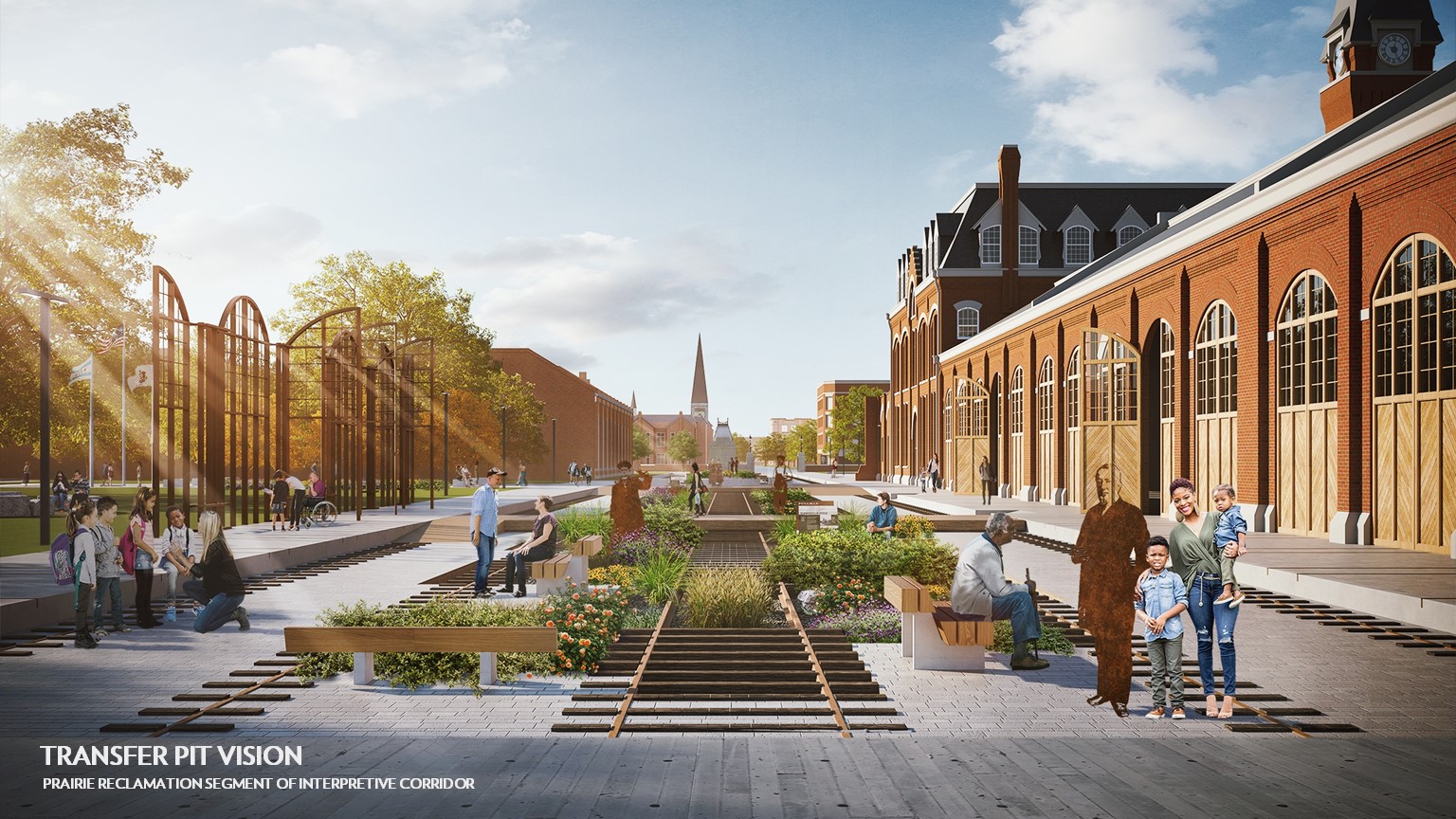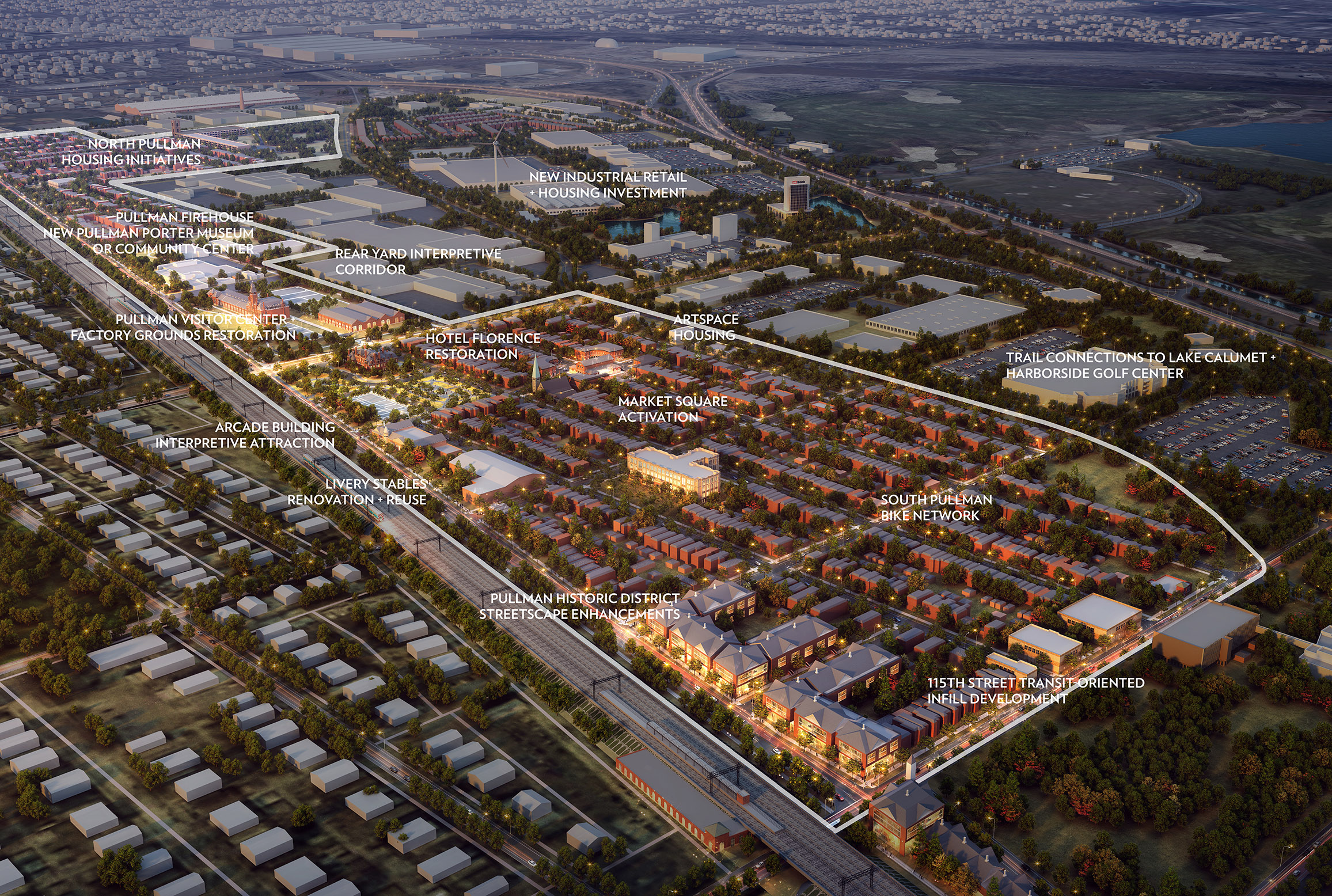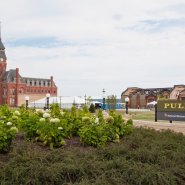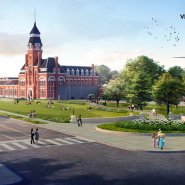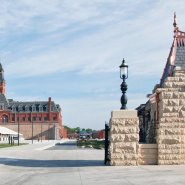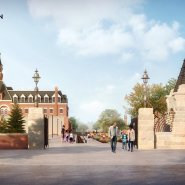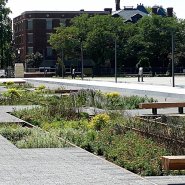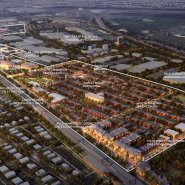Pullman National Monument is a must-see treasure of Chicago’s south side. The formerly independent industrial town, now a landmark Chicago neighborhood, was entrusted to the National Park Service in February 2015 through a presidential proclamation.
The town of Pullman has important historic significance to Chicago and the United States as a whole. Pullman was the setting for the evolution of industrial manufacturing and railroad transportation, the advancement of town planning, architecture, and landscape architecture, the establishment of US labor law, and the advancement of civil liberties for African Americans following the abolition of slavery. The Pullman Company produced railcars at the site until the late 1950s and its last lightweight passenger cars in 1965. The company continued to market and build cars for commuter rail and subway service and Superliners for Amtrak as late as the late 1970s and early 1980s. Decades of community advocacy and determination to save the site has led to a $35 million renovation project to transform the iconic Clock Tower and the surrounding 12-acre campus.
Pullman National Monument Visitor Center
The project converts 12-acres and 27,000 square-feet of abandoned buildings and grounds. Chicago’s only National Park now draws visitors and national attention, creating new jobs and economic opportunities that are strengthening the local economy. Since its opening in September 2021, the project has attracted more than 300,000 visitors. The Visitor’s Center program introduces visitors to America’s civil rights and labor movements and encourages them to explore the Pullman community and attend other cultural programs hosted offsite at the Pullman Artspace Lofts or the A. Randolph Pullman Porter Museum.
The project has been a catalyst for further development in the Pullman community. There are now plans to garner and invest additional resources to renovate the vacant Hotel Florence, the North Wing and Rear Erecting Shops at the Factory Grounds, and other buildings to help bring the stories of Pullman’s history alive for the hundreds of thousands of visitors who visit national parks each year. More than $60 million in funds has already been allocated for infrastructure and transportation improvements in the area, which also will benefit more than 50,000 neighborhood residents and create additional economic opportunities in the region.
In addition to these future projects, efforts are underway to develop a new hotel on the remaining two-and-a-half acres of the former Ryerson Steel site, near the Visitor Center, which will help attract more people and businesses to the community and create more jobs. It is also expected that public agencies such as Metra, Chicago Department of Transportation, CTA, and others will parlay the work done on site to provide greater access to the site and to other communities for Pullman/Roseland residents.
Positioning Pullman
Prior to the rehabilitation of the site, a team comprised of forty volunteer architects, landscape architects, city planners, economists, and engineers assembled with Pullman community stakeholders to develop a roadmap for improvement and operations. A 3-day workshop was held to engage the community, with more than 500 people attending. Discussions were organized around four topics: Park Experience, Historic Preservation and Adaptive Reuse, Access and Connections, and Community Development.
The workshop weekend began with a well-attended community meeting at the historic Greenstone Church to introduce the planning process and have one-on-one discussions with members of the design team. The following day, the team worked at the historic Hotel Florence envisioning design and policy concepts to enhance the function and appearance of Pullman, while addressing business and job growth, environmental stewardship, and regional connectivity.
On the last day of the workshop, a public open house in the north wing of the historic Pullman Factory building offered the opportunity for the technical teams to talk through their findings and report out on their recommendations with the community. The conversations then centered on fine tuning the content, aligning goals and priorities, and identifying stakeholders that can help advance implementation.
Based upon public feedback from the open house, AS+GG refined the workshop materials and prepared an “Ideas Book” of design and community enhancement recommendations. The book includes an action plan with 35 projects paired with lead entities, order-of-magnitude costs, and priority considerations. The book is publicly available via Issue here.
